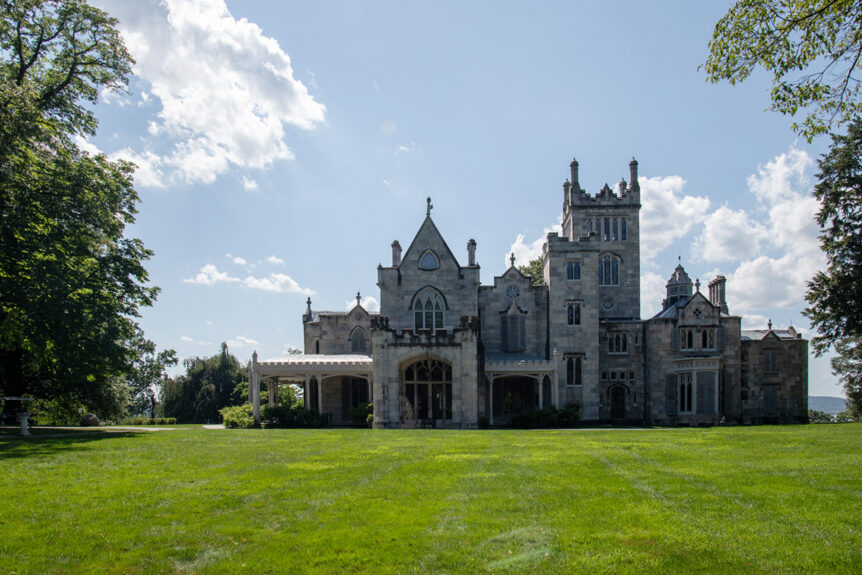Lyndhurst celebrates America’s first “starchitect.”
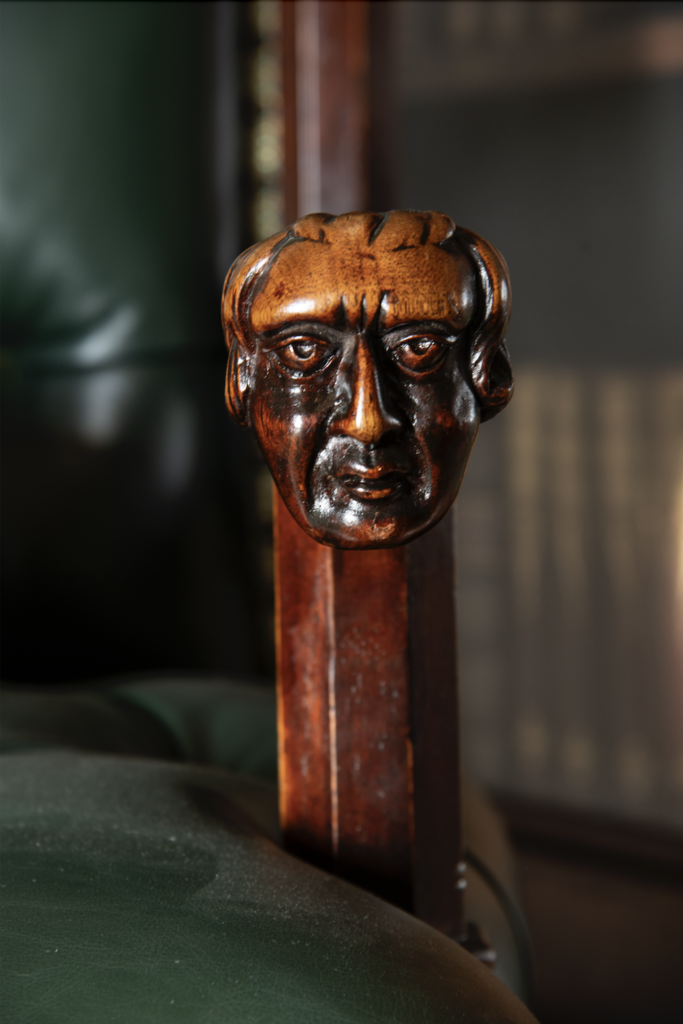
Few museums can boast a fourteen-thousand-square-foot object as the centerpiece of an exhibition. But Alexander Jackson Davis: Designer of Dreams, on view at Lyndhurst to October 13, has at its core the iconic mansion designed by Davis and its extensive collections, in addition to more than eighty objects on loan from some of the most prestigious decorative arts museums in the country.
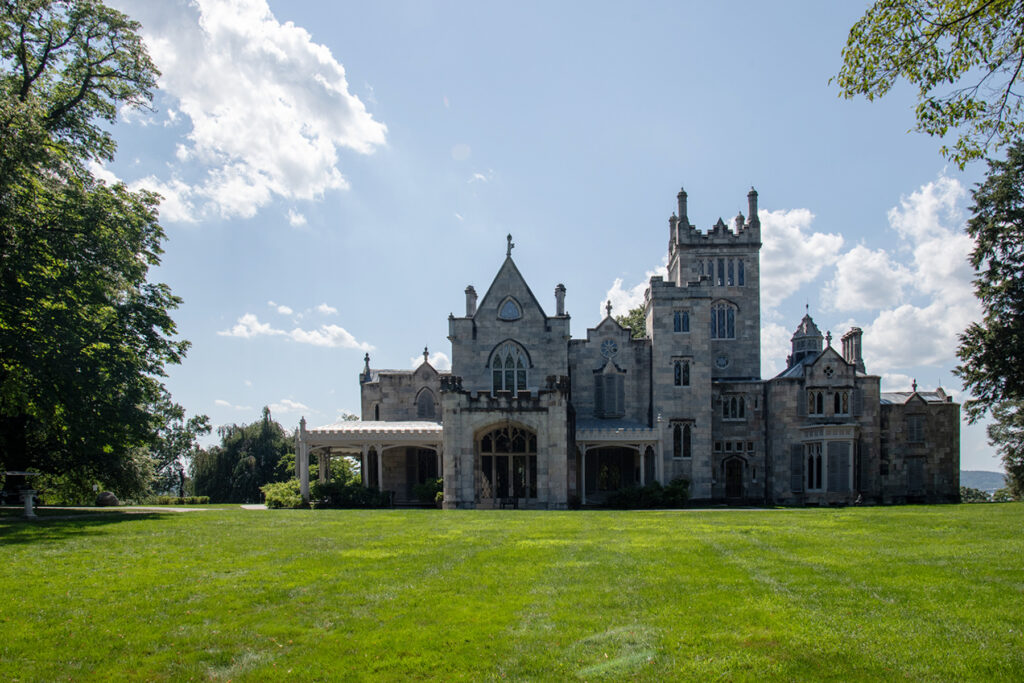
The first nationally recognized professional architect in the United States, Davis designed universities, museums, state capitols, and innumerable houses up and down the East Coast, as far south as North Carolina and as far west as Kentucky and Illinois. He first came to prominence in the 1820s as the primary designer of Greek revival structures, along with his partner Ithiel Town. During the early nineteenth century, Greece was viewed as an appropriate paradigm for the new American democracy, and the Greek revival style found widespread appeal.

However, Greece was a slaveholding country, and with the rise of abolitionism in the 1830s, the style fell out of favor in the North, although it remained prevalent in the South until the start of the Civil War. Replacing the Greek revival, romanticism swept the United States due in great part to the popularity of the novels of Sir Walter Scott. Not unlike the impact of Harry Potter books today, Scott’s tales of ruined castles, knights in shining armor, and damsels in distress were widely influential throughout every social stratum of the United States.

Going into practice on his own in 1829, Davis turned to the more fanciful Gothic revival for his clientele of the newly wealthy, who had benefitted from the trade provided by the Erie Canal, northern industrialization, and the early expansion of railroads. Davis designed the exterior and interior of buildings, chose their furnishings, designed furniture, and placed the buildings within the landscape.
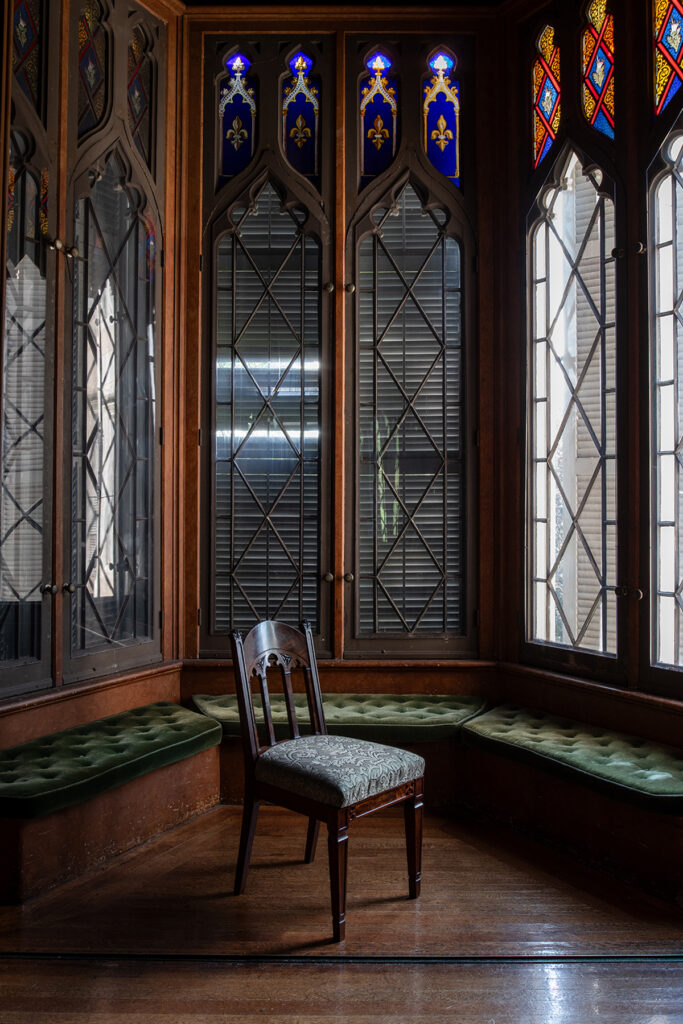
The exhibition looks at several of Davis’s most significant Gothic houses, from Paulding Manor (the initial iteration of Lyndhurst) to Walnut Wood in Bridgeport, Connecticut, Ericstan in Tarrytown, New York, and Belmead in Virginia. Each of these properties is represented by a combination of watercolor renderings from Davis’s hand, furniture designed for each property, as well as photographic documentation of the now-demolished buildings. Ericstan, Davis’s Italian-style castellated neo-Gothic structure, became a girls school attended by author and diplomat Claire Booth Luce. Its lavish interiors are captured in yearbook photographs from the 1920s and 1930s.
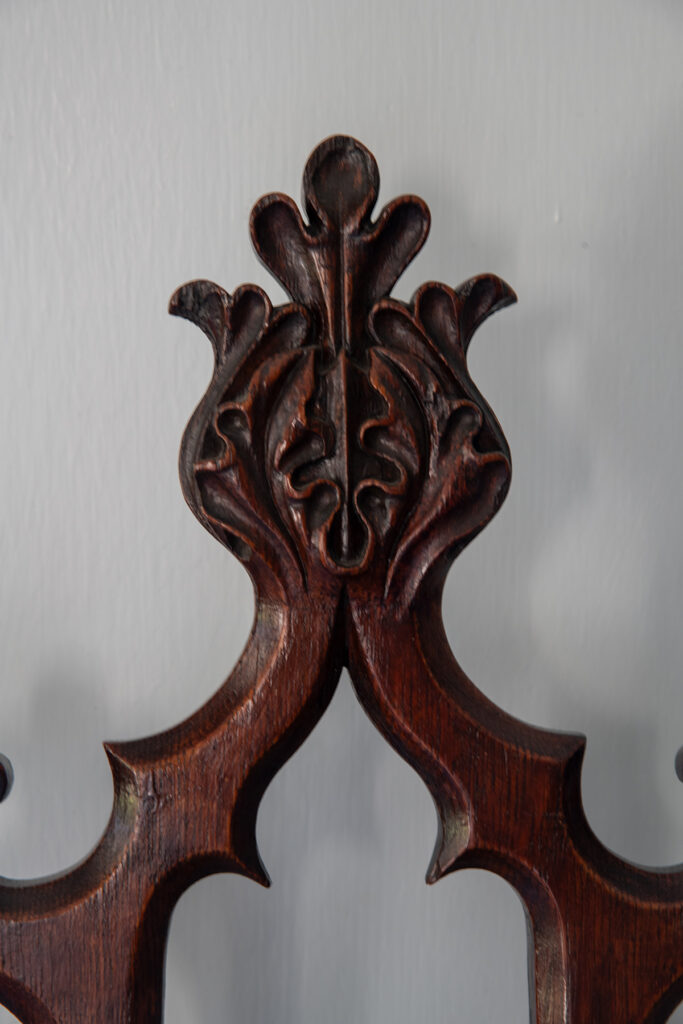
Lyndhurst is pivotal and bookends Davis’s career in Gothic fantasy. It represents his first fully realized Gothic revival structure, initially constructed between 1838 and 1842 for former New York City mayor William S. Paulding. Davis returned to double the classical regularity of prior buildings and pointing the way to the Victorian designs that would predominate after the Civil War. The exhibition is particularly rich in material pertaining to both commissions for Lyndhurst, including Davis’s watercolors, architectural drawings, diaries, correspondence with the client, and rarely seen examples of pieces from the Lyndhurst collection.
Davis kept extensive archives, which were divided upon his death between four New York institutions—the Metropolitan Museum of Art, New York Public Library, Museum of the City of New York, and the Avery Library at Columbia University. The exhibition size of the estate (which would then become known as Lyndehurst, and later Lyndhurst) between 1864 and 1867, essentially creating the first Gilded Age McMansion for early railroad magnate George Merritt, but it was also his last major architectural commission.
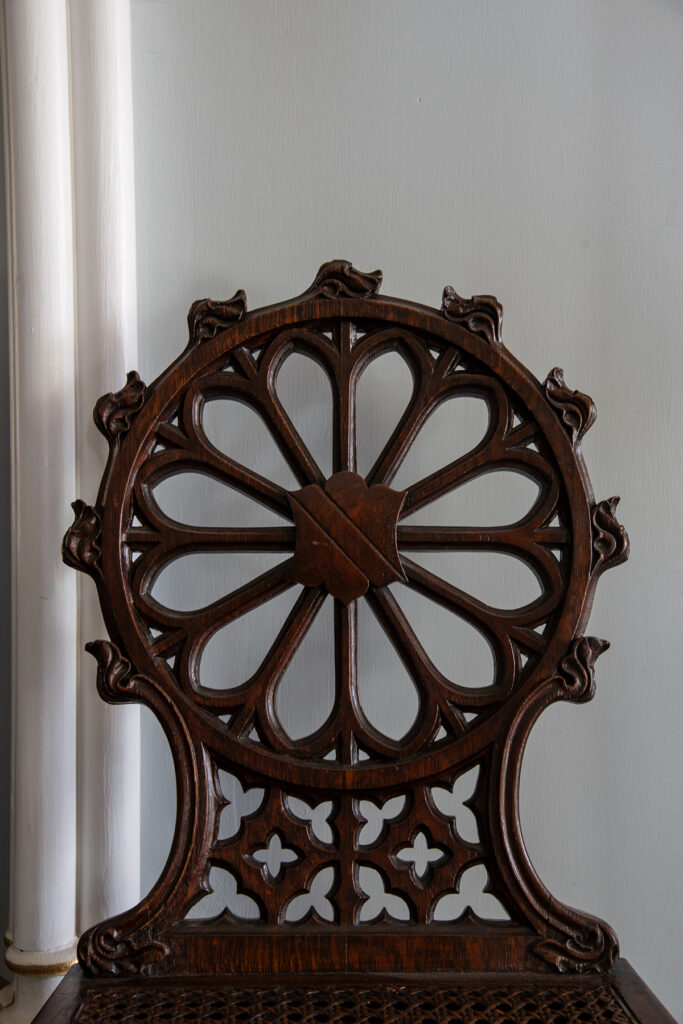
Lyndhurst is viewed as representing the changeover from classicism to romanticism in the United States. Prior attempts at Gothic design, whether mansion or furniture, were largely Greek revival examples with pointed arches replacing rounded ones. At Lyndhurst, Davis romanticizes his architecture, dismantling the unites archival work from each of these important holdings for the first time since their dispersal. Other lenders include New York Historical, Historic Hudson Valley, Winterthur, the Smithsonian, Hirschl and Adler Galleries, and private collectors.
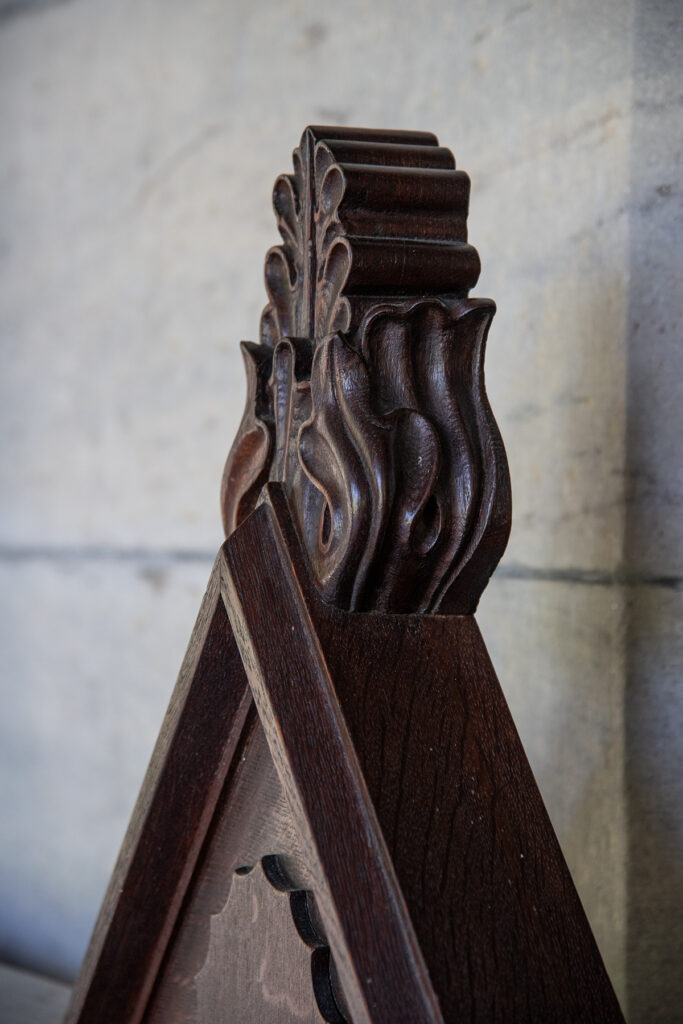
Alexander Jackson Davis: Designer of Dreams is displayed in both the Lyndhurst exhibition gallery and in the mansion itself, along with Lyndhurst’s extensive holdings of more than fifty pieces of furniture that Davis designed for the house. Of course, the house itself is the most important work on show.

